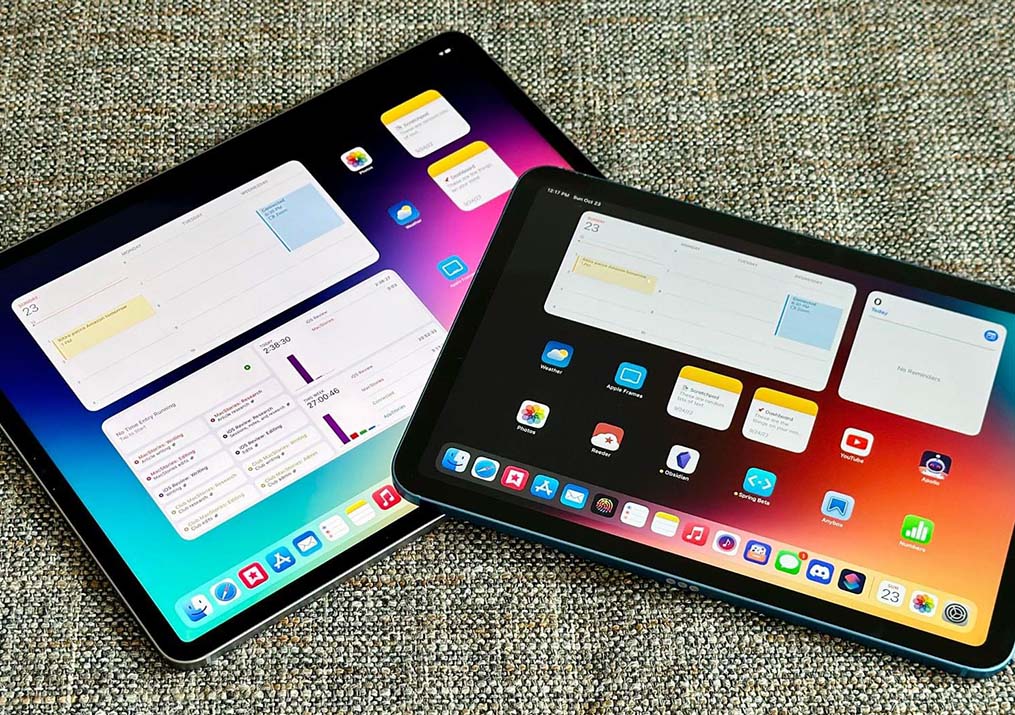Seven Reasons to Use iPads in Schools!

Distraction or a new interactive learning approach? Whether you like it or not, tablets are infiltrating traditional education. Forget about backpacks filled with books. It’s the era of tablets and digital learning. Explore the benefits of using iPads in the classroom!
Technology is penetrating education at an incredible pace. The learning process has evolved from chalkboard learning to interactive whiteboard learning. While the previous generation dreamed of using desktop computers to solve math, writing, and drawing problems, the next generation speculates about the benefits of laptops in the classroom. Sounds awkward these days, doesn’t it? Now is the era of tablets, a compact, on-the-go technology and knowledge carrier. When used for education, tablets are more powerful and cheaper than computers. Enrich education by using intuitive touch screens and simple controls. The benefits of using electronic devices in learning are well known. More and more school classrooms in Germany are incorporating tablets for personal use into their curriculum.
1 – Tablets and iPads are Easy to Use
Tablets are certainly more intuitive and easier to use than desktops, laptops, or even manuals. Even small children can use iPads. Research published in the Journal of Computer Assisted Learning shows that most children demonstrate positive progress in “developing literacy, numeracy, science, and problem-solving skills,” among other skills. Educational games are straightforward and can be used by young children to enhance their learning. Even elderly individuals can learn quickly through tablets. It’s a great way for grandparents to engage with young grandchildren by listening to music or playing games together. Tablet Synchronization and Charging More and more classrooms are equipped with iPads, providing students with a modern, interactive learning experience. But iPads need power, requiring daily charging. Synchronization is also a priority.
2 – Direct, Easy, Real-Time Communication
Tablets connect all key stakeholders: students, parents, and teachers. Handwritten notes or tasks may be unintentionally or intentionally lost immediately. Digital data never encounters such a situation: any feedback, including comments, encouragement, or concerns, can be consulted. The “forgetfulness factor” no longer exists. It’s neither suitable for students nor teachers. Technology also allows parents to check grades and contact teachers when their child needs extra help. Through emails and online chats, students can be reminded to submit papers or talk to children struggling, so no one is left at a disadvantage in education.
3 – A Few Clicks Away from a Vast Database!

Teachers can quickly convey interesting content to students in real-time with just a few mouse clicks. Additionally, students can use recommended resources to complete assignments. Tablets allow students to access personal research instantly, providing them with a rich knowledge base through the cloud (i.e., virtual storage). In the past, students had to find classmates or consult books for homework help. Nowadays, there are thousands of websites and videos showcasing examples and explaining learning materials. Children no longer have to fail just because they can’t go to the library or seek help from friends. iPad and tablet shockproof cases: Comfortable grip Protect tablets with appropriate cases to avoid unpleasant accidents in the classroom. The best way to protect iPads or tablets in schools depends on the age of your child. We recommend providing child-proof covers for young children. However, for older students, we suggest using boxes with pen holders so that expensive Apple Pencils won’t be lost! This way, you can use iPads in the classroom anytime.
4 – Personalized Learning Methods for Everyone
You must embrace multiple learning styles because not all students learn in the same way. Some learn slowly, while others learn quickly. The pace varies, and so do the interests. Teachers can overcome this barrier by using electronic learning libraries and teaching the same course in different ways. For example, playing videos or inviting students to play learning games. These tablets can also be used for special needs. Disabled students will appreciate the flexibility, storage space, and customized programs of tablets. As most devices offer various features, personalized approaches become easier. For example, students with reading difficulties or difficulty concentrating for long periods can have large chunks of information dictated to them. Children can also talk to tablets and convert their voices into text to write paragraphs. Other disabled students can download the technologies they’re already using onto tablets and carry them around. Tablets present traditional information in more creative and engaging ways, which indeed helps integrate children with learning disabilities. Locks, stands, and anti-theft devices for iPads/tablets, as well as higher security For schools with tablets available for student use, we provide anti-theft locks and stands. Anti-theft devices would be very useful if your devices are left unattended. Securely fasten MacBooks, Mac Pros, or iMacs to solid objects to prevent theft (even accidental).
5 – Cheaper Than Textbooks
Basically, in the medium to long term, tablets are actually a good investment. It relieves the heavy burden of buying textbooks every year, which benefits you more. No dust, no price hikes, no surprises from textbook suppliers, no storage issues, and no damages. It’s like a lightweight, fully expandable backpack that can hold thousands of textbooks internally or in cloud storage space. Tablets can also be easily updated to the latest versions. A year or two ago, when schools changed their curricula, they still had to buy new books, eventually spending tens of thousands of euros to serve hundreds of students.
6 – Enhancing Students’ Media Literacy and Fostering Creativity

Whether you like it or not, digital technology reigns supreme. That’s why learning how to use computers and tablets in elementary school is important. Additionally, the convenient format of tablets can promote creativity—no need for additional tools to draw, create music, or make movies. This way, students become creative individuals rather than passive knowledge recipients. While young students certainly don’t need to worry about not finding a job anytime soon, starting early can give them an advantage in the future. Who knows, maybe children will discover they enjoy using computers and aspire to choose careers as programmers or graphic designers one day.
7 – Simulation Learning for More Motivated Learning
Pilots, soldiers, and surgeons have long used simulation games. They can now be used on tablets. Games are not just for distraction and killing time; they can also inspire creativity and reflection. Learning in a simulated environment can alleviate some of the pressure some children may feel during tests, presentations, or when learning new and difficult subjects. It can also bring experiences that were previously impossible into the classroom. For example, students can take a walk in the forest or observe deep-sea creatures with a camera. Technology can open the door to truly fascinating subjects and inspire children’s enthusiasm for learning. Osmo Little Genius Starter Kit is a great way for children aged 3 to 5 to learn while having fun. These games stimulate their imagination and critical thinking, making learning enjoyable. Educational coding and programming games: Osmo Coding Awbie Teaching logic and problem-solving skills, Professor Jam helps children succeed in an increasingly digital world. Coding Jam is the easiest way to introduce coding to your child. The latter two products are just a few of the hundreds of educational toys that stimulate children’s cognitive skills. Marbotic Smart Letters Lower Case Learn according to the Montessori principle With Marbotic’s Smart Letters Lower Case set, children can learn to read, write, and understand language in a fun way according to the Montessori principle. Improve children’s language skills in a fun way.
When deciding whether to use tablets in schools, it’s essential to determine your ultimate goals and key stakeholders. If the new initiative is to work in situations where drawbacks may exist, unanimous approval is crucial. Tablets help students prepare for the workplaces of the future. They provide them with unparalleled confidence and creative tools in traditional classroom infrastructure, attracting and motivating those who are difficult to reach and inspire. Last but not least, they help us and our children speak the same language—an opportunity not to be missed.


